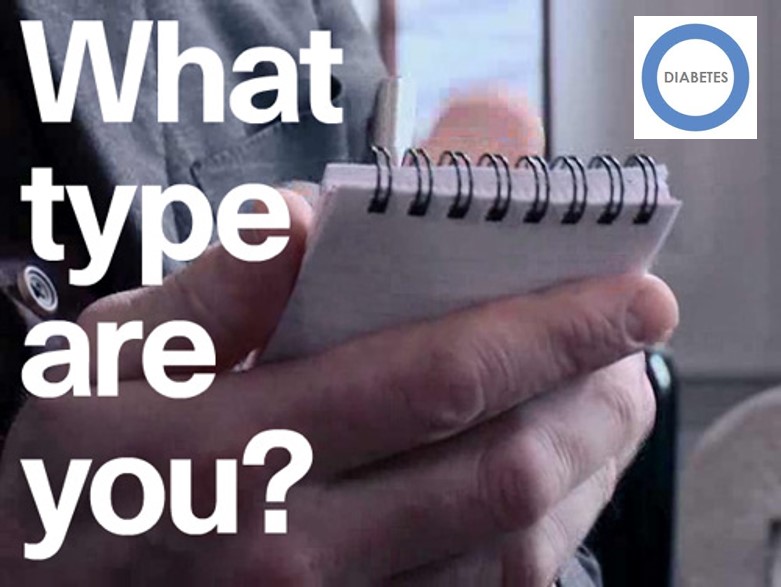"What stage of type 1 diabetes do you have?"
That question could become a common one soon, if some leading diabetes experts succeed in establishing an official three-tiered delineation of the early stages of T1D in order to pursue research and treatments in preventing the autoimmune condition.
In other words, the kind of multi-stage disease model that exists for a handful of other conditions like Alzeimer's, cancer, kidney disease and beyond could soon be coming to the type 1 diabetes world. A precise set of definitions is being proposed for three early stages of T1D, aimed at putting specific labels to those who don't yet have type 1 but could be predisposed and at higher risk for eventually developing the autoimmune condition.
And no, we're not just talking "pre-diabetes" here. This goes way beyond that, into an actualscientific definition and screening process rather than the vague abyss drawing in millions of souls who may someday develop type 2 diabetes.
Yesterday, we published an interview with a diabetes endo-researcher who's pursuing insulin independence for those of us already living with type 1. Today, we're looking at another side of that research coin.
"Currently, you either have T1D or don't, but that does not fully capture the complexity of T1D for all people," said JDRF's Chief Scientific Officer Dick Insel at an October workshop in Bethesda, MD, that brought a handful of researchers and industry experts together to discuss this issue.
This push for a new three-stage scheme of early type 1 diabetes comes on the heels of two decades of screening and research by entities like TrialNet, which have helped get a better look at the early onset of type 1 -- even if we don't have a full grasp at this point on what causes the body to attack the immune system and kill off its insulin-making cells. The experts pushing for the schema say it will help create better clinical trials that could lead to faster drug development, treatment and even T1D prevention.
Three (or possibly four?) early stages would be established:
"This is not an area that's really known to many other potential players in regulatory or research worlds right now," said Cynthia Rice, JDRF's vice president of advocacy and policy. "But that was the point of the workshop -- to bring these researchers together and bring this topic more to light for R&D going forward. This could have really significant implications for prevention of type 1 diabetes, helping us develop research and new treatments along with being able to better establish a regulatory pathway."
A big goal here would be to eliminate that "surprise" factor in a D-diagnosis that often leaves families -- especially kids and their parents -- reeling from sky-high glucose levels and dangerous DKA experiences. The same goes for adults, who are still often misdiagnosed by both general practitioners and endocrinologists who too-quickly toss out a type 2 diagnosis when it should have been T1D. With childhood obesity and insulin sensitivity rates rising, the JDRF sees this as the time for re-defining these early stages to help make it more clear what kind of diabetes someone may have or be on the path toward.
And if this can contribute to delaying or even preventing a full-blown T1D diagnosis, then it's worth pursuing of course!
Rice says this is an emerging hot topic for the diabetes medical community, although experts have been thinking on it for years as the growing evidence has come from trials such as TrialNet and others -- all of which focus on prevention by exploring the histories of early diagnosis in PWDs and families of those living with T1D. A research publication on this is being finalized in the coming months, and that will probably lead to more discussion at next summer's American Diabetes Association Scientific Sessions in Boston (June 5-9, 2015).
"This defines the risk of doing nothing," Rice says, in regard to the stages and prevention efforts. That's an interesting thought.

Still, while defining specific stages of T1D onset seems to have potential for thesome various avenues of cure and prevention research underway, there also seems to be potential for a lot of confusion in the broader patient spectrum if new terms are embraced.
After all, there's already a lot of confusion in the world of diabetes, and as years of conference sessions have revealed, even top minds in the field can't agree on how many types of diabetes exist and what they should be called. Neither does our own patient community agree; we often grapple with confusion over diabetes labels and can be quite divided on names for this type or that.
So really, we have mixed opinions on this concept. Yes, it does sound worthwhile to pursue for the clinical and research side. But we caution against too much focus on these stages amongst the patient community out in the real world, where we are already dealing with so much misinformation and misunderstanding about what we're all living with.
Keeping it simple seems like the best path forward for us PWDs, even while adding complexity might help the R&D side lead us to better treatments.




0 nhận xét:
Post a Comment